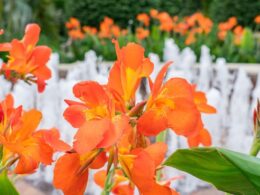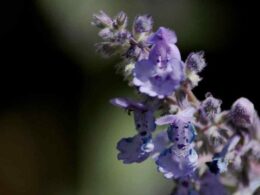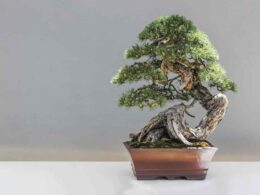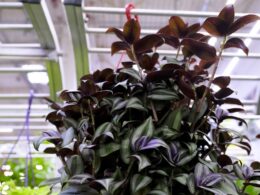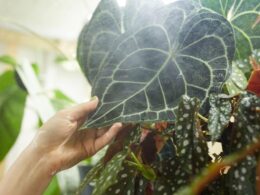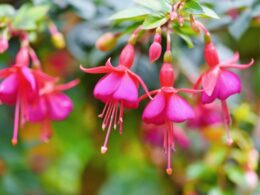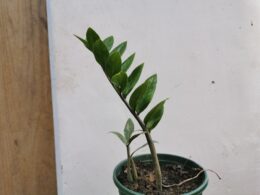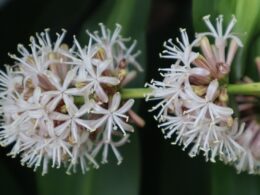What Is a Gardenia Plant? Origins and Characteristics of Gardenias
Gardenias are native to the tropical and subtropical regions of Africa, Asia, Madagascar and Australia. The genus Gardenia contains 140 species and belongs to the coffee family (Rubiaceae). Gardenia plant care will be similar for most species, although you may want to look up your specific cultivar as well.
Gardenias are evergreen shrubs that can grow up to 8 feet tall. Gardenias have glossy, dark green leaves and beautiful white flowers that bloom from late spring to fall. The most common species found in gardens is Gardenia jasminoides – many cultivars of this gardenia have been developed for their double flowers.
Growing Gardenias Indoors
If you live in an area with a climate that’s too cold for gardenias, don’t despair – gardenias can be grown indoors. Indoor gardenia plant care is a bit more challenging because these plants require high humidity and bright, filtered light. However, with the proper care, your gardenia will thrive indoors.
Gardenia Plant Care – Soil Type and Fertilizer
The first step in gardenia plant care is choosing the right type of soil. Gardenias prefer slightly acidic soil with a pH between 5.0 and 6.5. The soil should be loamy and well-drained, yet always moist.
You can use gardenia fertilizer (or another acidic, slow-release fertilizer) to provide the nutrients gardenias need to thrive. Look for one that is high in nitrogen, which will encourage robust foliage growth. Fertilize your gardenias every 2-4 weeks during the growing season.
Gardenia Plant Care – Watering
As we mentioned, gardenias prefer moist soil. If it isn’t raining, water your gardenia plant deeply and regularly to keep the soil evenly moist. The ideal amount of water is 1 inch of rain per week. Gardenias are drought-sensitive, so make sure not to let the soil dry out completely.
How Much Light Gardenia Plants Need
Gardenias need full sun or bright, indirect light to bloom. If you’re growing gardenias indoors, place them near an east- or west-facing window, so that they get 6-8 hours of sunlight per day. Outdoors, gardenias should be grown in partial shade – too much sun will scorch the leaves in the warmest months.
Ideal Temperatures and Humidity for Gardenia Plants
A big part of gardenia plant care is providing the right environment. Gardenias are fussy about temperatures and humidity. They prefer daytime temperatures between 65-70 degrees Fahrenheit and nighttime temperatures between 60-65 degrees. Anything warmer or cooler than that, and they may drop buds.
Gardenias also need high humidity, so if the air in your home is dry, you’ll need to provide additional moisture. One way to do this is to place the gardenia pot on a tray of pebbles filled with water. The water will evaporate and help to increase the humidity around the plant. You can also use a humidifier or mist your gardenias with water every day.
Pruning Gardenia Plants
Gardenias benefit from yearly pruning to remove any dead or diseased branches. Prune gardenias when they’re dormant, which is after they’ve bloomed – in late fall or early winter. Cut back each branch by about one-third its length.
How to Propagate Gardenia Plants
Gardenias can be propagated by taking stem cuttings in early spring. To do it, cut a piece of stem that is about 4 inches long and has several leaves. Dip the cutting in rooting hormone, then plant it in moistened potting mix.
Place the pot in a warm, shady spot and keep the soil moist until roots have formed. Once the roots have grown, you can transplant the gardenia cutting to a larger pot or into your garden.
Repotting Gardenia Plants
Gardenias rarely need repotting – they bloom best when they’re slightly pot-bound. However, if it seems like there are more roots in the pot than soil, or if the gardenia is toppling over its pot, it’s time to repot.
Choose a pot that is only 1-2 inches larger in diameter than the current one. Place a layer of potting soil in the bottom of the pot, then carefully remove the gardenia from its old pot. Without disturbing the roots, place it in the new pot. Fill in around the root ball with more potting mix, then water well.
Common Problems with Gardenia Plants
Here are some problems that may occur when you’re growing gardenias. They may not be common, but it’s best to be prepared for them – early treatment will help bring your plants back to good shape.
- A lack of blooms. It could be due to a lack of sunlight, too much fertilizer, or temperatures that are either too hot or too cold.
- Dropping flower buds. This happens when gardenias are stressed, so make sure you’re providing the right environment and care.
- Wilting. It’s usually a sign of too much heat or not enough water. Make sure they’re getting enough moisture and that the temperatures aren’t too high
- Aphids, scale, spider mites, or mealybugs. These pests can be controlled with insecticidal soap or horticultural oil.
- Fungal diseases, such as powdery mildew. These can be treated with a fungicide.
With proper gardenia plant care, you should be able to enjoy these beautiful flowers for many years. But if any of these problems occur, don’t despair – gardenias are tough plants and can usually be brought back with a little extra TLC!
Gardenia Plant Toxicity
While non-toxic to humans, gardenias are poisonous to dogs, cats, and horses. The leaves and flowers contain compounds that can cause stomach upset, vomiting, and diarrhea. If your pet ingests gardenia plants, call the vet right away.
That’s it for gardenia plant care. With a little attention, you can enjoy these beautiful and fragrant flowers indoors or out. Happy gardening!








